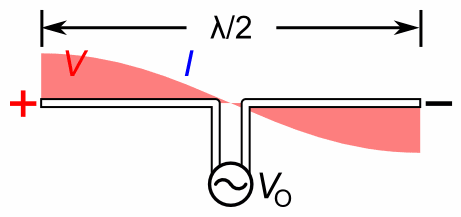Resonance, Antennae, and DNA Damage
Consider that most all biological structures are in some capacity, fundamentally elastic. That is, insomuch as a structure is defined by its particular shape, it has a tendency to restore to that shape when pressured to deform. If a structure does not restore to its original shape upon deformation, it is considered mechanically plastic. Plastic structures are not biologically viable, for the obvious reason that they are not capable of repeatedly cycling on the same task. Plasticity also tends toward fractures and failures. Even our stiffest structures, like our teeth and bones, act elasticity by restoring their structure following compaction and stretching.
But elastic structures are not impervious to structural failure. In fact, all one needs to do produce failure in an elastic structure is to deform the object beyond its particular limits. This could be as simple as applying a specific rupture force to the material. This is most often how bones are fractured during accidents. Another mechanism by which elastic materials might fail, however, concerns the notion of resonance. Resonance is the process by which periodically applied pressures are amplified within a material at specific frequencies. This amplification occurs because the material is acting to restore its shape at the same rate that it is being deformed in that same direction and so the translocating efforts become additive. Resonant amplification can yield disastrous consequences upon structures.
A key example of the resonant destruction of an object occurred on November 7th, 1940 in the state of Washington, when a bridge nicknamed “Galloping Gertie” collapsed due to catastrophic resonance between periodic wind pressures and its own elastic design. The shape of the bridge trapped gusts of wind such that a periodic fluttervibration arose within the confines of its decks. The bridge failed because the frequency of this flutter matched the natural frequency of the bridge’s own elastic modes. We could say that the two pressures, the structural restoring forces of the bridge, and the wind were in perfect harmony that day. In fact, this sort of phenomenon is not entirely uncommon. Destructive resonance is behind the broken champagne glass when the opera singer dramatically hits the high note.
The Tacoma Narrows Bridge collapse on Nov. 7th, 1940 was the result of commensurate interplay between the elastic properties of the bridge and the periodic pressure of gusting wind. (Image: Wikipedia).
The concept of resonance is found all throughout nature and has been thoroughly harnessed by humans for technological ends. A great example is antennae design. Antennae are constructed such that their dimensions match the impulse of radiation which they are designed to detect. In other words, the natural frequency of the antennae’s structure is tuned to match the frequency of the radiation impulse it receives. The allows the antennae to electrically vibrate in resonance with the signal it is seeking to channel. This naturally leads to the question: could antennae be driven to catastrophic resonance?
A dipole antenna has dimensions that are tuned to resonantly match the radio-impulse: in this case; half a wavelength (image: Wikipedia).
Why not? If one were to place a fork in a microwave oven, for instance, you would be achieving a sort of catastrophic resonance between the natural electric vibrations in the metal and the excitation of the impulse radiation. In a sense, the metal is shaken so perfectly by the radiation that its atoms become disordered, whereby it heats up and causes potential for fire damage. Might a similar mechanism be at play during DNA damage by UVB radiation from the sun?
Consider that the DNA is a highly elastic structure that even resembles a spring, with a helical shape that twists back on itself every 3nm or so. It certainly seems possible that the periodic pressure of ultraviolet light, about 10^15 impulses per second (~ 300nm wave), might be commensurate with the structure and dimensions of the DNA molecule itself, such that catastrophic resonance could occur. While various chemical reactions are known to detail the actual rupture of the nucleic acids rigid backbone, it seems fair to suggest that a resonance could build between the antennae-like and elastic DNA molecule and the sun’s highly energized atoms which periodically agitate the DNA through UV radiation. In this sense, our DNA may be literally shaken to mutate by the very sun that lights our days.
The structure of DNA (top) is highly elastic and each axis of symmetry allows for new modes of vibration and resonance with various impulses. This may allow it to function resonantly with electromagnetic radiation, as does a typical radio wave antenna (below).










